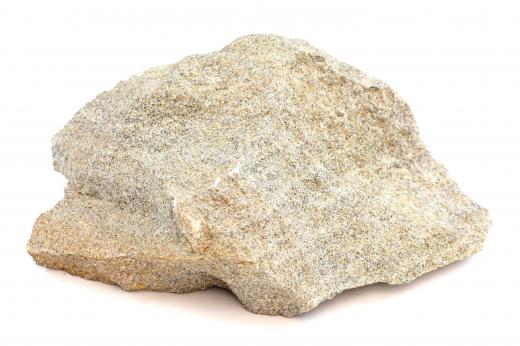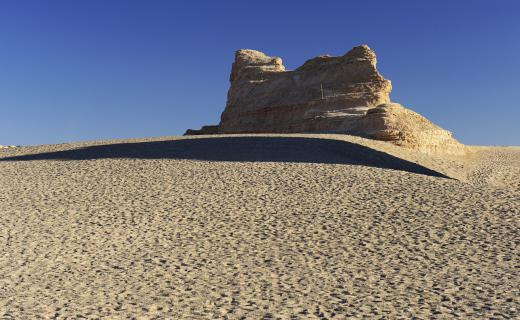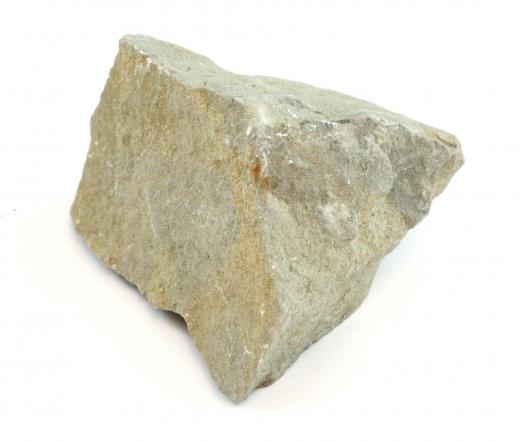What are Clastic Rocks?
 Mary McMahon
Mary McMahon
Clastic rocks are rocks which are composed of small fragments of other rocks. These fragments, known as clasts, determine the composition and texture of the clastic rock. One well-known example of clastic rock is sandstone, a type of rock made from sand-sized fragments of other rocks. Despite the name, sandstone is not necessarily made from sand, although it often contains at least some sand, depending on where and how it formed.
The classic example of clastic rocks is sedimentary rocks. Sedimentary rocks are distinguished by being composed of sediments of varying sizes and composition, and they can be found all over the world. They form when the deposition of sediments over time creates an area of high pressure. The high pressure of successive layers of sediment causes the bottom layers to compact, eventually resulting in the formation of a deposit of sedimentary rock.

Other types of rock can be clastic as well. Igneous rocks, which form as a result of volcanic activity, may take the form of clastic rocks. Tuff, for example, is an igneous rock which is actually comprised of a number of fragments, making it both igneous and clastic in nature. Numerous other types of igneous rocks can include a mixture of rock fragments.

Metamorphic rocks may also be clastic in nature, if they contain fragments of other rocks. The heat and pressure associated with metamorphic processes can fold fragments into rock formations, force rock fragments together, and create clastic rocks. The composition of metamorphic clastic rocks can provide key information about the age of the Earth's crust in a particular area, and about the history of processes which have taken place in that area.

The formation of clastic rocks starts with weathering, in which existing rock is broken down into fragments. These weathered fragments are brought back together again by a variety of processes, such as deposition of mineral salts, pressure, volcanic activity, and so forth. The character of a clastic rock can be determined by looking both at the texture, and at the composition. Sometimes the clasts are uniform in nature, as in sandstone, for example, and sometimes they vary in size, as in a breccia, a deposit of clasts of many different sizes.
Clastic rocks can sometimes contain interesting geological clues. They can provide information about the geologic history of a particular region which may be interesting, for example, and the information in their clasts can be used to gather data about how rock formations develop and what kind of factors can influence rock formation.
AS FEATURED ON:
AS FEATURED ON:













Discussion Comments
A piece of this breccia looks just like fruitcake to me! The matrix is the color of rusty clay, and the rock pieces look like nuts and fruit.
I learned in geology class that breccia always has angular shards of rock in it. The kind with rounded rock pieces is called conglomerate.
@StarJo – I think that kind of concrete would fall under the clastic rock classification. True, it is manmade, but it was through a sedimentary process, even though it was very rapid.
The wet concrete was probably poured in with some rock fragments or pebbles. It solidified, creating a matrix in a short amount of time.
I have a collection of clastic and non-clastic sedimentary rocks in a geology kit that I got as a gift when I was ten. I've always been fascinated with rocks and minerals, and this kit came with an instruction manual that told me how to tell which kind was which.
I still remember the term “clastic” and how to distinguish clastic rocks from the other kind. I remember a piece of clastic rock that had pretty big chunks of different kinds of rock in it, and it made me think of the concrete sidewalk by the school.
Post your comments